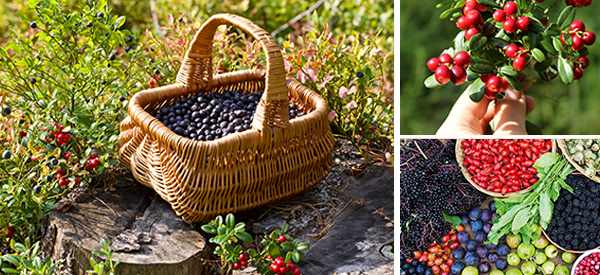
10 Berries You Should Look For In The Woods
Walking in the woods is such a serene experience. When walking in the woods, you may often come across some elements of nature that you know nothing about and wonder what they are and what they do!
Berries are one of those elements! With over 400 varieties of berries in America alone, it’s often difficult to recognize the edible from the inedible and the good from the not-so-good.
Berries that grow in wooded areas can vary significantly in size, shape, color, and of course, variety. But how on earth do we tell which ones are which? And how do we know whether they have hidden benefits or hidden risks underneath the often attractive exterior?
Let’s take a wander through 10 of the varieties of berries you might find while out in the woods and how you can use them when you come across them.
Blackberries
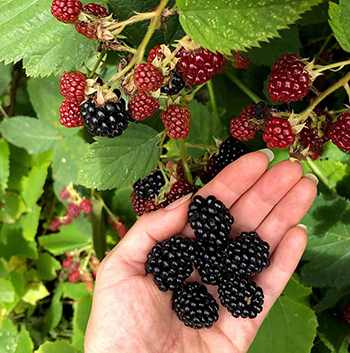
Scientific Name: Rubus
Where To Find Them: Eastern America/Pacific Coast
When To Find Them: July-August
Blackberries are amongst the most common berries found in woodland areas the world over and can grow in vast amounts year after year.
They grow on thorny bushes and look similar to raspberries in their appearance but are distinguishable by their deep purple/blue color.
How To Use Them:
Blackberries are incredibly versatile, and when they are ripe, you can eat them straight from the bush!
Given their high antioxidant properties, eating them in any way will be particularly good for your health!
You can use blackberries to make jams, fruit pies, or make the most beautiful blackberry-infused tea, by steeping the berries in hot water. This is equally delicious to drink as Iced tea too!
Buffaloberries
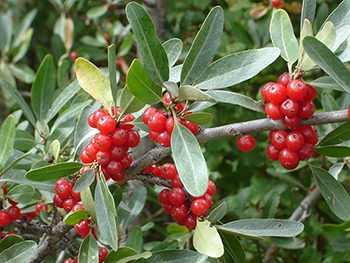
Scientific Name: Shepherdia Argentea
Where To Find Them: Central and Western North America
When To Find Them: July-September
Don’t let the strange name fool you into thinking these berries are big!
These tiny little bright red berries grow in clusters on banks and hillsides and are very similar to cranberries in appearance, and pack a seriously sour punch!
Native to Central and Western North America, to can find these berries from California to Arizona.
How To Use Them:
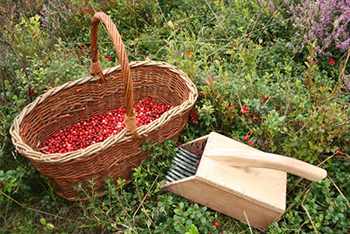
These berries can be eaten whole, but it can be a very sharp experience!
We recommend using these in the more sugared preparations such as jams or in a sweet and sour sauce and the sour component.
These tiny red gems are rich in lycopene, which is said to reduce the risk of some types of cancer.
Barberries
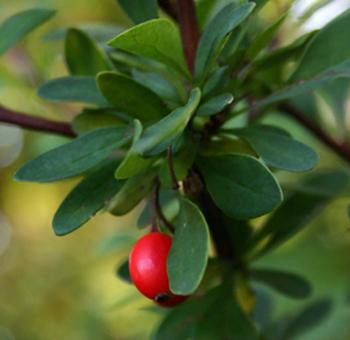
Scientific Name: Berberis
Where To Find Them: Southern/Central North America
When To Find Them: August/September
Barberries are a red color and can be found on thorny shrubs across all Southern parts of North America, but the Barberry originates from Europe!
Small and elongated in shape, Barberries are particularly difficult to pick, given the spiky surroundings of the bush.
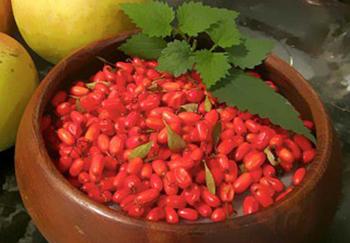 How To Use Them:
How To Use Them:
Rich in vitamin C, these small pale red berries can be dried and freeze-dried for use in rice dishes and earthy dishes that require a sour punch.
The Barberry will benefit from adding sugar or syrup if they are being used as an ingredient in the kitchen, so dishes such as summer puddings and chutneys may be an appropriate use!
Chokeberrie
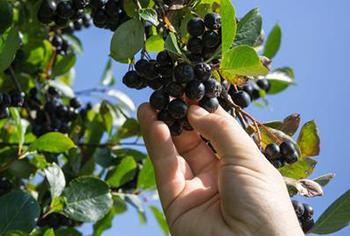
Scientific Name: Aronia
Where To Find Them: Eastern North America
When To Find Them: September- December
Now, these berries have a name that raises the alarm! But this is only a part-caution to these deep purple, medium-sized berries.
While they may not actually choke you in the asphyxiation sense, they are so bitterly sour they may make your face reflect the overriding sourness!
They hold many antioxidants that may help to relieve symptoms of some chronic illnesses, such as high blood pressure and inflammation.
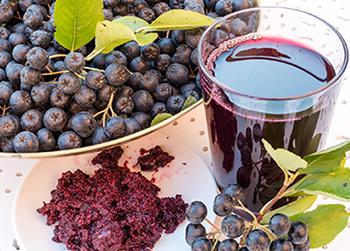
How To Use Them:
Chokeberries can be eate
n raw with no culinary intervention; however, any additional sweetness would counteract their sharpness given their natural tart flavor.
You may also find chokeberry inside some health capsules as a supplement.
Click Here for a Complete Guide to 400 Wild Plants That You Can Forage For
Cloudberries
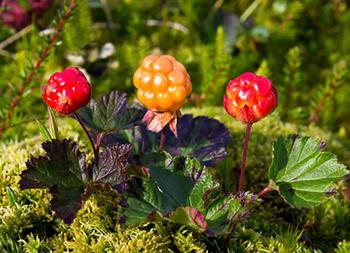 Scientific Name: Rubus chamaemorus
Scientific Name: Rubus chamaemorus
Where To Find Them: Alaska, Maine, Minnesota, New York, and New Hampshire.
When To Find Them: May-August
The cloudberry is a mix of blush peach and pink in color and forms the “berry” with small segmented clusters of juicy pockets, similar in appearance to a raspberry or blackberry.
Cloudberries grow on the ground in far northern parts of America, Canada, and Alaska and are incredibly tart to taste!
How To Use Them:
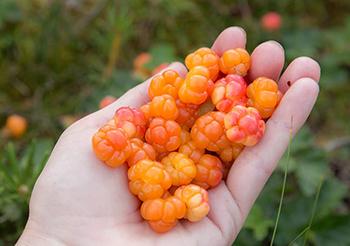
Extremely high in vitamins
A & C, Cloudberries may help the body protect itself from ailments such as cardiovascular disease and may help to strengthen the immune system.
Again, their sharp flavor would benefit from additional sweetness for cooking, such as sugar syrup, meringues, and sweetened whip!
Dewberries
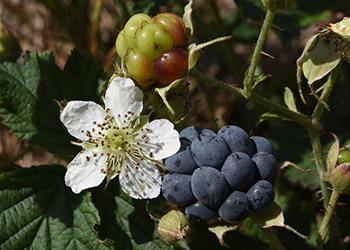
Scientific Name: Rubus caesius
Where To Find Them: Southern North America
When To Find Them: March-April
Dewberries are very closely related to the blackberry and raspberry, and this is evident in the segmented appearance of the whole fruit, although smaller in size.
Found growing low on woodland floors or the roadsides, they creep as they grow and have very spiky surroundings, which may be to protect the very delicate fruit itself.
How To Use Them:
The Dewberry is a wholly beneficial plant as the leaves can be safely consumed too (Usually herbal tea).
However, the dark purple-to-blue berries are naturally sweet to be eaten at source or added to other berries for a summer Berry salad or in jello for an adult dessert.
Saskatoon

Scientific Name: Amelanchier alnifolia
Where To Find Them: Central North and Western North America
When To Find Them: June/July
Saskatoons are a berry that is a doppelganger for a blueberry, but instead of growing in a carpet style, they grow in tiny clusters on trees.
Deep blueish color with a dusty coat, saskatoon berries are packed full to the brim with antioxidant properties that will see you in good health.
How To Use Them:
Although not as sweet as a blueberry, saskatoons have the delicate flesh you’d expect from a berry and can still be eaten straight from the tree, as well as be used in pancakes, smoothies, and scattered on desserts.
Cowberries
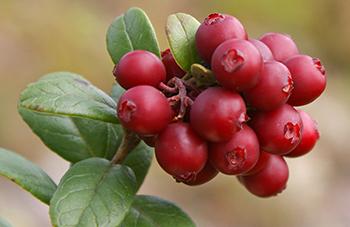
Scientific Name: Vaccinium Vitisidaea
Where To Find Them: Pacific Northwest to Alaska, Massachusetts, and Maine
When To Find Them: June-August
Cowberries grow beautifully in clusters, and the berry itself is a plump, shiny red jewel.
Similar in berry status to the cranberry, these small and perfectly round berries are pretty firm and have a sharp and tart taste.
How To Use Them:
They are packed with vitamin C, much like the cranberry, and lend themselves perfectly to preserves and baking.
They would also be a tremendous and contrasting accompaniment to a cheeseboard.
Huckleberries
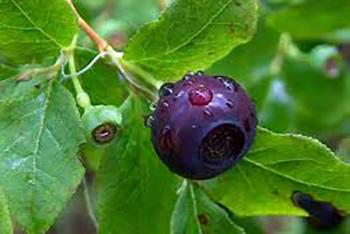
Scientific Name: Vaccinium membranaceum
Where To Find Them: Widespread Clusters, Specifically Northwestern Territories
When To Find Them: July-August
You will find Huckleberries in mountainous, cool, and moist woodland settings, hiding amongst the lush green leaves of their host!
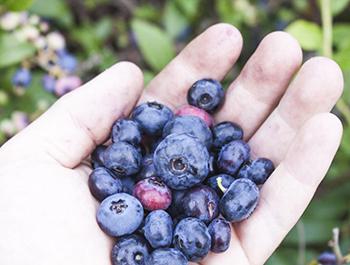
You’d be forgiven for easily mistaking them for a blueberry, and if it wasn’t for the fact that the huckleberry grows on trees as opposed to a floor-level blanket style, you might easily get the two confused!
The huckleberries are very similar in color to a blueberry, too, sporting a deep purple/blueish color.
The deep color often denotes the level of goodness in fruit by way of antioxidants, and the huckleberry is no different.
How To Use Them:
Well, you can use these berries similarly to blueberries, so using them in breakfast dishes, baking and smoothies will all get the best out of this beautiful berry.
Full of antioxidants, the huckleberries will bring an extra layer of health benefits to your day.
Elderberries
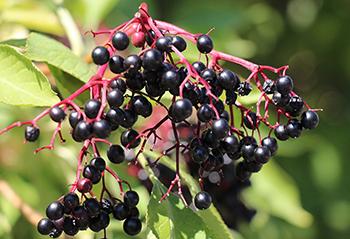
Scientific Name: Sambucus canadensis
Where To Find Them: East Of The Rocky Mountain, and Southward
When To Find Them: July-September
Elderberries are an immune-boosting dream berry!
Packed with immune-boosting properties and minerals, elderberries grow in large bunches of tiny dark purple berries on red stems.
Elderberries thrive in cooler climates and will grow in large numbers for a well-established bush.
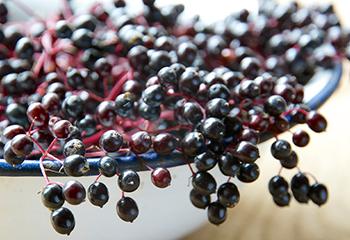
How To Use Them:
Given that they can grow in huge numbers in the right environment, elderberries are usually cultivated and used in health-boosting products for natural wellbeing.
You will find elderberries the perfect berry for conserves, cordials, and put-in summer drinks for that special health-conscious touch.
Cooked ripe elderberries are perfectly edible. Unripe elderberries are poisonous. Raw berries can cause nausea, vomiting, and diarrhea, among other symptoms, so be sure to cook them before eating. Cooking the berries also improves their flavor.
There is such a rich abundance of wild berries you can look for when out on a woodland walk, and many of these are edible right from the tree or bush and so full of great things for your health and immune system.
Of course, finding certain berries on your travels will totally depend on where you are in America and what berries are native to your local area; there will likely be many more you find on your travels!
Have fun finding berries, but always make sure that you can identify them successfully before you decide to consume them in any way!
You may also like:
Coffee Berry, Nature’s Wasted Superfood
100 Foods That Last 10 Years (Video)
How To Make Your Own Raspberry Vinegar









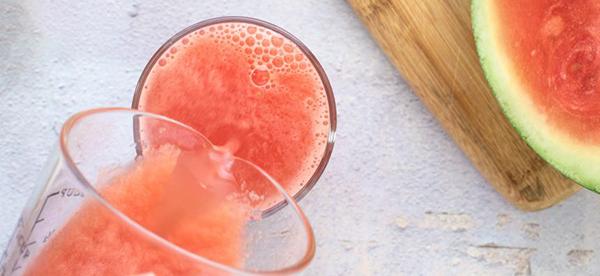
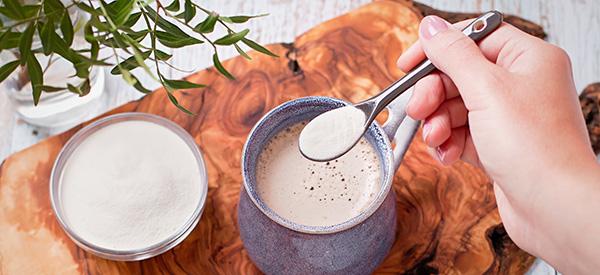

Never seen saskatoons before; will definitely be on the lookout, thanks!
In Illinois, they begin to ripen in the first week of June; wait for them to ripen to a deep purplish color if you want to enjoy the full flavor. Here they are usually referred to as serviceberries.
They are one of the best choices if you are interested in making pemmican since they are less juicy than blueberries.
That’s great to know, thanks, Margo!
Huckleberries do not grow on trees, actually. They grow on bushes low to the ground.
And in western Washington state they usually are red!
I recently purchased 2 acres in Northern California an I have blue and red huckleberries. Mostly red, though. Can’t wait to harvest them.
Older huckleberry shrubs actually grow into small trees in the southeast.
This is really nice! Useful guide for wild picking😉thanks
Hi Fanny,
Thank you for your comment.
I’m glad to hear you liked our article.
Many blessings!
Do any of these have poisonous or digestive upsetting look a likes?
Elderberries should not be eaten raw. They need to be cooked to avoid gastric upset.
I was eating my elderberries raw until i learned from reputable sources that Consumption of raw elderberries can cause an accumulation of
Cyanide inducing glycocides. Now I’m reading comments of flowers and berries are ok. I’ve eaten raw berries for years without any apparent issues. I don’t want to heat them and ruin their medicinal properties. I need to get some solid reputable answers. More research needed.
I’ve eaten raw also but to me they’re nasty tasting. I make what I call Dr.Toe’s Tonic for the Flu season. Been doing this for over 6 years. It better than any poisonous Flu shot. 2tbls. of each AVC,lemon juice, local honey, elderberry syrup and 1/4tsp. of cinnamon mixed with 20oz. of water drink once a month for the Flu season or year round, your preference !
In the South we have a Huckleberry that is the size of a BB, but It grows on a bush, not a tree. It is the same color as the other Huckleberry or Blueberry and is it ever wonderful.
Interesting but I live in Europe and I would like information over berries in that environment. I know blackberries. They grow in my garden.
You missed black raspberries that grow wild nearly everywhere in the Midwest. Plus wild grapes.
I should have spotted that one myself, having picked and eaten wild black raspberries, also called blackcaps, throughout my childhood. Here in Northern Illinois, they grow in woodlands, and on the North edges of wooded areas. They grow on a low bramble that is quite thorny. For some reason, they nearly always ripen on or around the 4th of July weekend.
Oh, and in Wisconsin, especially around Delavan Lake, there grow RED chokecherries on enormous trees. You’d need lift-type equipment to pick them but the yield per tree might be worth it. Can’t recall in what season they ripen.
Here in NW Arkansas the black raspberries are the first to ripen in late May to early June. Occasionally you can find them in a golden color, which is a treat. Makes great jam if you freeze them until you have blackberries and blueberries to add. This “ black and blue” combination is really tasty.
Margo+Kelly, I grow about 1000 square feet of blackcaps, around my backyard border and one side-yard. The first year planted they grow their roots and non-bearing canes. The 2nd year fruiting canes. During the 2nd year if you snap off (or cut) the top six inches of the green cane during Spring (close to the last frost) they will shoot out up to 6 lateral (horizontal) cane-shoot- canes and you will have double, triple, maybe quadruple your yield. Just remember more canes require more water especially in poorer/dry soil.. I’m on WI/IL state line about an hour’s drive from Delavan. We got 90 quarts last summer most all frozen for my wife to eat in milk every breakfast. In Fall, all the canes grow about 12-ft in length and are arched. If you root them in the dirt, grass, near pavers, or in pots, you will get a brand new plant the following spring and it too will focus on its roots before fruit. Plus you can dry the 6-inch tops and use it for a raspberry tea. In Spring, while it is still cool, the tops will be sweeter. Each plant lives about five years (with first year producing no berries, when growing the roots). The 2nd and 3rd year will be your most productive, the fourth year you will get less berries, but hopefully you did or will root a baby plant nearby it that will be in its productive year when you decide to dig out your now “old” faithful. I pick with thin brown cotton gloves and cut off the tips of the thumb, and the two fingers next to the thumb. I wear jeans and a Dickies long sleeve shirt, I never get prickers passing through my gloves, pants, nor shirt. My patches are jungles because of those side-canes growing together and making canopies. I’m old and dislike bending over, so I crawl under the canopies, and stand to get berries over the canopies. Crawling is easy on the back for everyone–babies do it and love it! I do too! My wife thinks 90 quarts of fresh blackcaps, if sold would produce about $750. If you have lots of extra pots, you could sell “baby berries” at garage sales, or wherever. I want to “bare-root” (it means hose off the root-dirt to carry them out to a shaded woodsy place and replant them for anyone, birds, etc. Berry lovers who hate jungles (and hate crawling) string wire to posts and tie their canes to the wires in some “easier to pick” pattern. If you go to YouTube everyone will tell you water twice a week and many of those people also make laterals. But that would not work in my soil. In the hottest summer weeks I am watering every other day, until a good rain does the job for me. Blackcaps are high in anti-oxidants (they fix dysfunctional cells), anti-viral, anti-bacterial, anti-parasite, etc. Red raspberries are a little weaker than blacks, but still high in basic ingredients.
I’m pretty sure elderberries are toxic unless cooked…. Surprised that’s not mentioned as a warning. You should never eat them fresh. And only the fruit and flowers are edible at all. The rest of the plant is toxic.
Also, the difference between blackberries and raspberries isn’t the color, but a solid center in blackberries and hollow center in raspberries. There are actually black raspberries that are the same color as blackberries and they’re common in the woods around me.
I really like what this website is trying to do, and I like the books, but please edit your articles more carefully for better accuracy and important safety information!
It is surprising, but elderberries are not toxic. It is the stems and branches that is toxic. If you read up on them, all books tell you to make sure to remove all stems from the berries.
Let me correct myself, raw elderberries can cause stomach upset and unripe berries are toxic. Aimee is correct in that the whole tree is toxic except for the flowers and ripe berries
Ditto
My name was jumbled in the reply. Its Theresa Pember
Hi Aimee,
Thank you so much for your feedback and for your continuous support.
We apologize that the article was incomplete. In the meantime, we added the safety concerns as well.
Cooked ripe elderberries are perfectly edible. Unripe elderberries are poisonous. Raw berries can cause nausea, vomiting, and diarrhea, among other symptoms, so be sure to cook them before eating. Cooking the berries also improves their flavor.
Many blessings and good health!
You did mention the raw Elderberries were toxic if eaten raw or underripe.
Love receiving all your info on wild plants.
Aren’t elderberries toxic unless cooked?
Hi Paul,
Cooked ripe elderberries are perfectly edible. Unripe elderberries are poisonous. Raw berries can cause nausea, vomiting, and diarrhea, among other symptoms, so be sure to cook them before eating. Cooking the berries also improves their flavor.
Many blessings and good health!
InnWestern Washington we also have native blackberries (smaller and grow on low growing vines) , thimble berries, salmon berries, red huckleberries, shalal berries and Oregon grape
Elderberries are listed for cool climates but they’re so rampant here in the deep south they can be invasive!
Invasive here in my yard. Zone 7. They are as bad as the worst wisteria.. impossible to i
Eradicate!
Anyone know if any of these berries can be found in Central Europe? (Other than. Elderberry of course).
Love this article, thanks., but you’ve overlooked one berry that has ten to twelve times the antioxidant value of blueberries, known as Autumn Olive: Eleagnus Umbelata, also known as silverberry. This semi tart, single seed fruit has tiny white specks and leaves that have a silvery underside. It grows abundantly in fields and forest edges and is considered to be invasive in some states., nonetheless this beautiful berry is delicious as a snack, in jams and as fruit leathers. It blooms in late Fall.
Could you post a picture? I live in northern Illinois and don’t recall seeing anything like a silverberry.
I have this tree here it produces berries. I am nit sure if they are edible but the birds eat them. They are dry, not much juice but taste nice. Is there somewhere I can send or upload the picture
American native elderberry varieties are the only ones that are not toxic when eaten ripe and raw as only the American native varieties do not contain cyanide. When foraging, it is best to assume they are not an American variety and cook them unless you know for sure that they are an American variety.